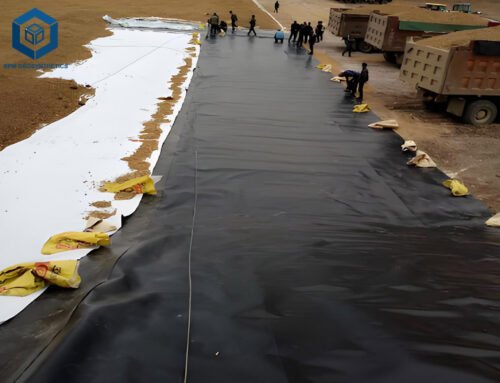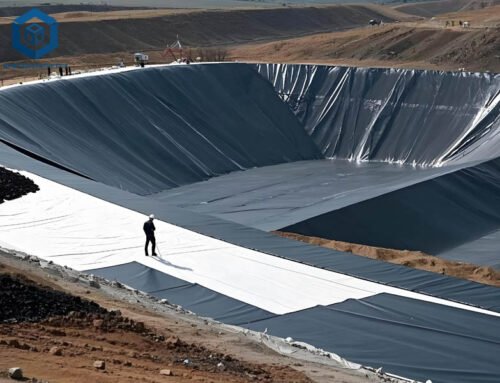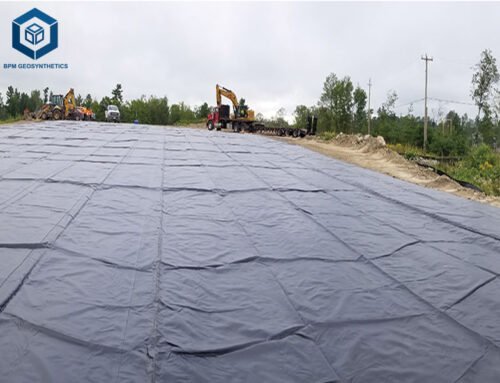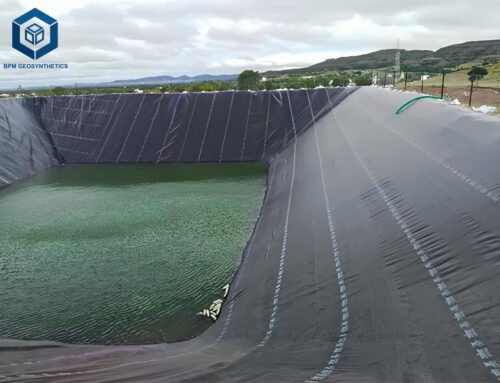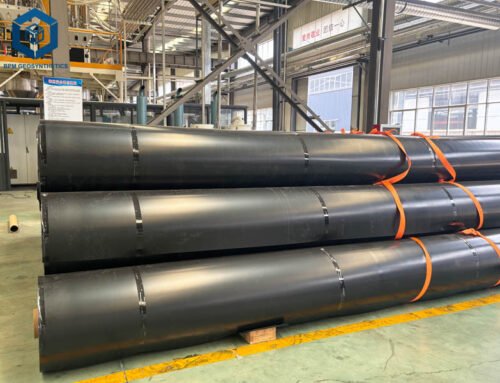Root barriers are essential solutions for protecting landscapes, foundations, and infrastructure from invasive tree and plant roots. With the global geomembrane market valued at USD 2.1 billion in 2023 and projected to grow at a 6.5% CAGR through 2030, root barriers, particularly those made from High-Density Polyethylene (HDPE), account for a significant share due to their durability and effectiveness. These barriers prevent costly damage to sidewalks, driveways, foundations, and underground utilities, saving homeowners and municipalities 30–50% compared to repair costs, which can average $7,500 for foundation fixes. This comprehensive guide explores the Root Barrier Cost installation, breaking down material types, installation factors, and regional variations to help you budget effectively. By understanding the specifications, pricing, and considerations involved, you can make informed decisions for your landscaping or construction project.
1. What is a Root Barrier?
A root barrier is a physical or chemical mechanism designed to redirect or inhibit the growth of tree and plant roots, preventing them from damaging nearby structures. Physical barriers, typically made from HDPE, polypropylene, or metal, are installed underground to guide roots downward or block their lateral spread. Chemical barriers, less common due to environmental concerns, use growth-inhibiting compounds to deter root expansion. According to industry data, 80% of root barrier installations use physical barriers, with HDPE dominating 60% of the market due to its 50-year lifespan and 4409 N puncture resistance.
Types of Root Barriers
The cost of a root barrier depends heavily on the material and type. Below are the primary types available:
- HDPE Geomembrane Barriers: These are flexible, durable liners (0.76–2.032 mm thick) with a tensile strength of 15–20 MPa and 99.9% impermeability. They are ideal for trees, bamboo, and invasive species like Japanese knotweed. Cost: $1.5–$6/m².
- Polypropylene Panels: Often used in modular systems like DeepRoot, these panels (0.080–2.0 mm thick) feature 90° vertical ribs to guide roots downward. Cost: $6–$15/m².
- Permeable Geotextile Barriers: Woven fabrics, sometimes copper-infused, allow water passage while blocking roots. They are less durable (15–20 years) but cost-effective at $1–$3/m².
- Concrete Barriers: Poured into trenches, these are permanent but labor-intensive, costing $10–$20/m² due to material and installation complexity.
- Chemical Barriers: Mesh infused with growth inhibitors, effective for 5–15 years, costing $3–$8/m². They are less eco-friendly and used in only 5% of installations.
HDPE barriers are the most popular, used in 70% of residential and commercial projects due to their balance of cost, durability, and ease of installation.
Applications of Root Barriers
Root barriers serve multiple purposes, impacting their cost based on project scale:
- Residential: Protecting home foundations, sidewalks, and driveways from tree roots. Average project size: 10–50 linear meters.
- Municipal: Safeguarding urban infrastructure like roads and utilities. Projects often exceed 100 linear meters.
- Agricultural: Containing bamboo or invasive weeds like Japanese knotweed. Requires 0.6–2 m deep barriers.
- Commercial: Protecting parking lots, building foundations, and landscaping in corporate campuses.
Each application influences material choice and installation complexity, directly affecting costs.
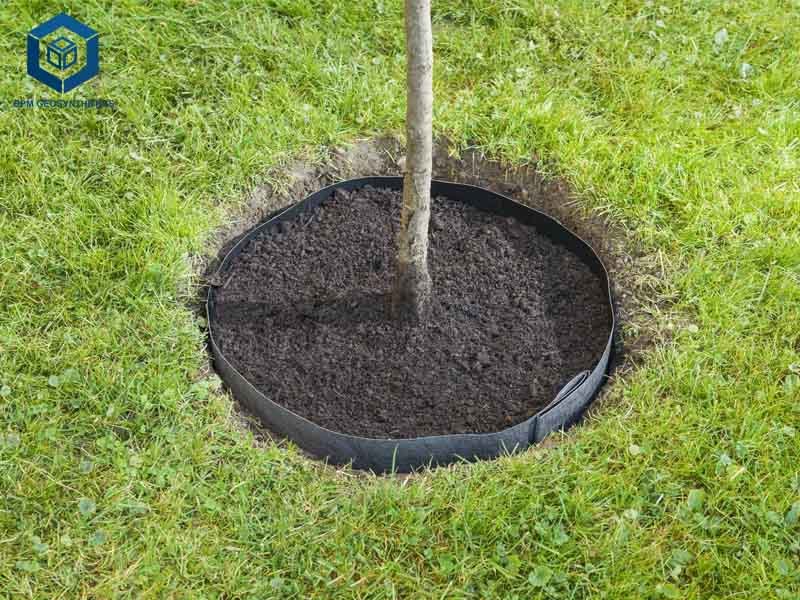
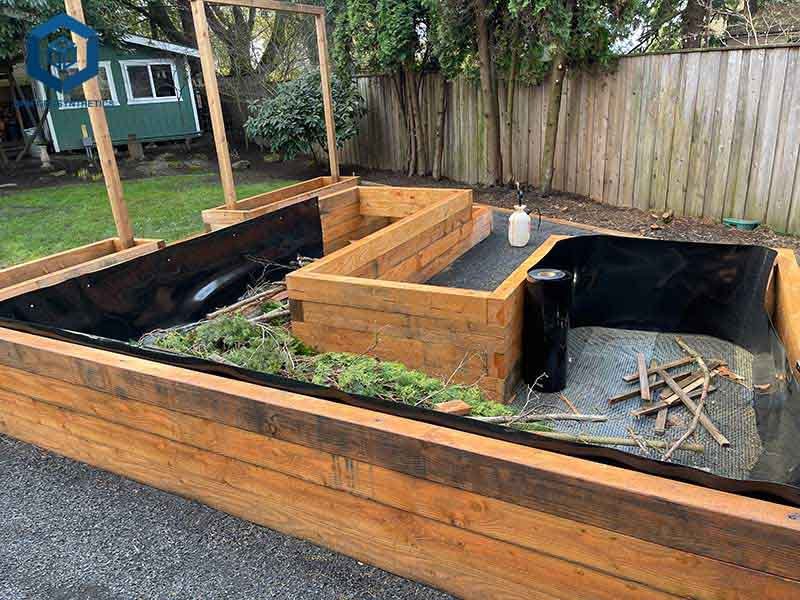
2. Factors Influencing Root Barrier Cost
The cost of a root barrier installation varies widely, typically ranging from $60–$150 per linear meter, with an average minimum project cost of $1,400. Several factors determine the final price, including material, labor, site conditions, and project scale. Below, we break down these factors in detail.
2.1 Root Barrier Cost – Material
The choice of material significantly impacts the budget. Here’s a detailed breakdown:
- HDPE Geomembranes: Priced at $1.5–$6/m², depending on thickness (0.76–2.032 mm). A 100 m² roll (0.76 mm) costs $150–$300, while thicker 2.0 mm rolls reach $500–$600. Custom fabrication adds 10–15% to costs.
- Polypropylene Panels: DeepRoot panels (24” x 24”) cost $6–$15/m², with a carton of 20 panels (40 linear feet) priced at $200–$400.
- Geotextile Barriers: Basic permeable barriers cost $1–$3/m², while copper-infused options reach $5–$8/m² due to added root-deterrent properties.
- Concrete Barriers: Material costs are $5–$10/m², but labor-intensive pouring increases total costs to $10–$20/m².
- Chemical Barriers: Mesh with inhibitors costs $3–$8/m², with additional expenses for environmentally safe disposal.
For a 15 m linear installation at 0.6 m depth, material costs range from $90 (geotextile) to $360 (HDPE, 2.0 mm).
2.2 Root Barrier Cost – Installation Labor
Labor accounts for 50–70% of total costs, varying by region and complexity:
- Standard Installation: In clay soils, labor costs $40–$80 per linear meter for a 0.6–1 m deep trench. A 15 m project costs $600–$1,200.
- Complex Sites: Rocky soils or obstacles like utilities increase labor to $80–$120/m² due to specialized equipment (e.g., soil saws or excavators).
- Professional Services: Certified installers, required for large or municipal projects, charge $100–$150/m², especially for welding HDPE seams.
In urban areas like California, labor rates are 20–30% higher than in rural regions like Texas, where clay soils reduce digging time.
2.3 Root Barrier Cost – Site Conditions
Site-specific factors can increase costs by 10–50%:
- Soil Type: Clay soils are easier to excavate, costing $40–$60/m, while rocky soils require $60–$100/m due to increased digging time.
- Tree Proximity: Trees closer than 3 m to structures require deeper barriers (1–2 m), increasing material and labor costs by 20–30%.
- Obstacles: Utilities, foundations, or existing landscaping add $10–$20/m for careful excavation or rerouting.
- Slope: Sloped terrain requires textured HDPE liners (15% more expensive) to prevent slippage, adding $5–$10/m².
A site assessment by a professional can identify these factors, preventing cost overruns.
2.4 Root Barrier Cost – Project Scale and Depth
Larger or deeper installations increase costs due to material and labor demands:
- Small Projects (10–20 m): Residential installations cost $600–$2,000, including $100–$400 for materials and $500–$1,600 for labor.
- Medium Projects (20–50 m): Common for larger properties, costing $2,000–$5,000.
- Large Projects (50+ m): Municipal or commercial projects cost $5,000–$15,000, with discounts for bulk materials (10–20% off for orders over 100 m²).
- Depth: Barriers 0.6 m deep cost 30–40% less than 2 m deep barriers, which require more material and excavation time.
2.5 Root Barrier Cost – Regional Variations
Costs vary by region due to labor rates and material availability:
- United States: Average cost is $60–$100/m. Coastal states like California average $80–$120/m, while Midwest states like Ohio range $50–$80/m.
- United Kingdom: Costs range £50–£100/m, with specialized barriers like Root Barrier C3 (for Japanese knotweed) costing £6–$12/m².
- Australia: Similar to the US, with costs of AUD 80–$150/m, higher in urban centers like Sydney.
2.6 Root Barrier Cost – Additional
Ancillary expenses can add 10–20% to the project:
- Geotextile Underlayment: Protects HDPE barriers from punctures, costing $1–$3/m². Recommended for rocky soils.
- Seaming Tape: For HDPE barriers, lapping tape costs $50–$100 per 19 m roll.
- Backfill Materials: Sand or engineering aggregate for compaction adds $2–$5/m².
- Permits: Municipal projects may require permits ($50–$500), especially for utility-adjacent installations.
- Maintenance: Annual inspections for invasive species barriers cost $100–$300.
3. Cost Breakdown by Project Type
To provide clarity, here’s a cost breakdown for common root barrier projects:
Residential Foundation Protection
- Scenario: 15 m linear barrier, 0.6 m deep, HDPE (1.0 mm), clay soil.
- Material: $90–$180 (15 m² at $6–$12/m²).
- Labor: $600–$1,200 ($40–$80/m).
- Total: $690–$1,380.
- Notes: Add $50–$100 for geotextile underlayment in rocky soils.
Bamboo Containment
- Scenario: 20 m linear barrier, 0.8 m deep, HDPE (1.5 mm), sandy soil.
- Material: $240–$360 (16 m² at $15–$22.5/m²).
- Labor: $1,000–$1,600 ($50–$80/m).
- Total: $1,240–$1,960.
- Notes: Custom-fabricated HDPE recommended for bamboo’s rapid growth.
Municipal Sidewalk Protection
- Scenario: 50 m linear barrier, 1 m deep, polypropylene panels, urban setting.
- Material: $600–$1,200 (50 m² at $12–$24/m²).
- Labor: $3,000–$5,000 ($60–$100/m).
- Total: $3,600–$6,200.
- Notes: Permits may add $100–$500.
Japanese Knotweed Containment
- Scenario: 30 m linear barrier, 2 m deep, Root Barrier C3, clay soil.
- Material: $360–$720 (60 m² at $6–$12/m²).
- Labor: $2,400–$3,600 ($80–$120/m).
- Total: $2,760–$4,320.
- Notes: Requires professional installation to meet environmental regulations.
4. Cost-Saving Tips
To minimize expenses without compromising quality:
- Install During Planting: Installing barriers when planting new trees reduces labor costs by 20–30%, as roots are not yet established.
- Bulk Purchasing: Order materials in rolls (e.g., 100 m²) for 10–20% discounts.
- DIY Installation: For small projects in clay soils, DIY installation can save $40–$80/m in labor. Ensure proper trench depth and compaction.
- Choose Appropriate Depth: Use 0.6 m barriers for shallow-rooted trees (e.g., maples) instead of 2 m, saving 30–40% on materials.
- Compare Quotes: Obtain 3–5 quotes from certified installers to ensure competitive pricing, especially for large projects.
5. Benefits of Investing in Root Barriers
Root barriers offer significant long-term savings and environmental benefits:
- Cost Savings: Prevent foundation repairs ($3,000–$15,000) and plumbing damage ($1,000–$5,000). A $1,400 barrier can save 5–10 times its cost.
- Property Protection: 90% of root-related damage to sidewalks and driveways can be prevented with proper barriers.
- Environmental Impact: HDPE barriers are recyclable, and their 50-year lifespan reduces replacement needs, cutting environmental impact by 20–30%.
- Tree Health: By guiding roots downward, barriers promote deeper root systems, improving tree stability and reducing water-seeking surface roots by 80%.
6. Choosing the Right Root Barrier
Selecting the appropriate barrier depends on your project’s needs:
- Tree Type: Shallow-rooted trees (e.g., maples, willows) require 0.6–1 m deep barriers, while deep-rooted species (e.g., oaks, pecans) need 1–2 m.
- Soil Conditions: Rocky soils necessitate thicker HDPE (1.5–2.0 mm) and geotextile underlayment, while clay soils can use thinner barriers (0.76 mm).
- Budget: Geotextile barriers are cost-effective for small projects, while HDPE or polypropylene suits long-term, high-risk applications.
- Regulations: For invasive species like Japanese knotweed, use barriers meeting Environment Agency standards (e.g., Root Barrier C3).
Consult an arborist or professional installer for site-specific recommendations, especially for projects near utilities or foundations.
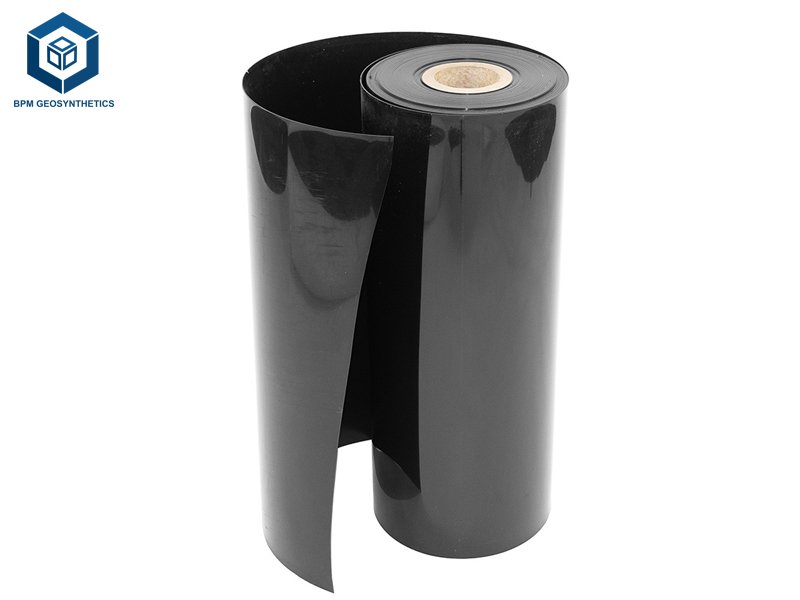
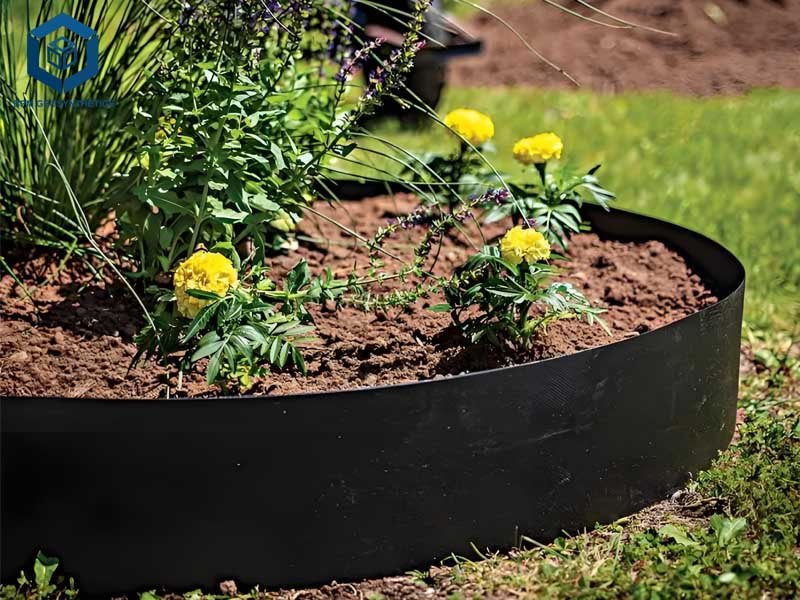
7. Installation Process and Costs
The installation process impacts costs and effectiveness. Here’s a brief overview:
- Site Assessment: Professionals evaluate soil, tree proximity, and obstacles ($100–$300).
- Trench Excavation: Dig a trench 0.6–2 m deep, costing $20–$50/m in clay soils or $40–$80/m in rocky soils.
- Barrier Placement: Install the barrier vertically, with 2.5–5 cm above ground to prevent root overgrowth. HDPE requires seaming for large projects ($50–$100/roll for tape).
- Backfilling: Compact soil or use aggregate ($2–$5/m²) to secure the barrier.
- Inspection: Verify barrier placement and seam integrity, especially for HDPE ($50–$200).
Professional installation ensures compliance with standards like ASTM GRI-GM13 for HDPE barriers, reducing failure risk by 95%.
8. Conclusion
Root barrier costs vary widely, from $60–$150 per linear meter, depending on material, labor, site conditions, and project scale. HDPE geomembranes ($1.5–$6/m²) and polypropylene panels ($6–$15/m²) offer the best balance of durability and cost, with 50-year lifespans and 95% effectiveness in preventing root damage. By investing in a quality root barrier, you can save thousands on foundation repairs, protect infrastructure, and promote tree health. For accurate budgeting, obtain multiple quotes, conduct a site assessment, and consider DIY for small projects to reduce labor costs. Whether you’re safeguarding a home foundation or containing invasive bamboo, a well-installed root barrier is a cost-effective, long-term solution.
For personalized advice or quotes, contact BPM Geomembrane. Protect your property today and enjoy peace of mind for decades.

